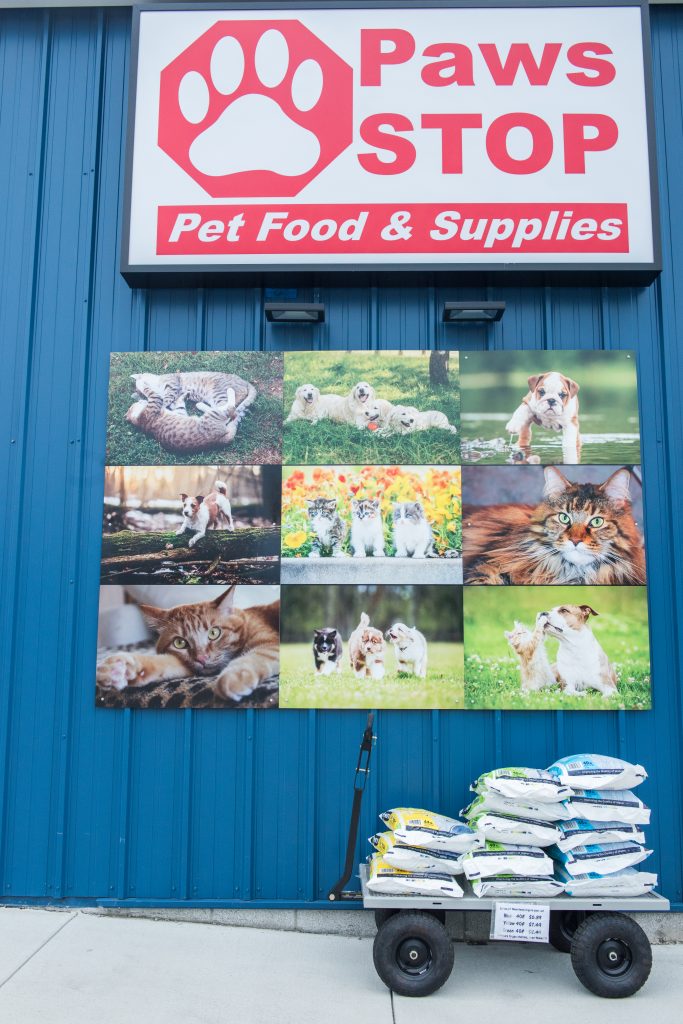Pet Obesity Has Reached Nearly 60 Percent of Family Pets
Writer / David Moore, Paws Stop Owner
 We all know the health consequences of obesity, and they are the same for our family pets. We don’t want to contribute to a problem that is preventable and will harm their quality of life and shorten their time with us. I think the biggest difference is the number of pounds overweight seems relatively minor to many Pet Lovers. For example, we know a male, adult human that weighs 240 lbs and should weigh 200 lbs is 20 percent overweight. 40 pounds is a lot of weight and is easy to see and understand. However, a dog or cat that should weigh 10 lbs and weighs 12 lbs is 20 percent overweight, that two pounds is the same 20 percent as the 40 lbs, and the consequences are just as dire.
We all know the health consequences of obesity, and they are the same for our family pets. We don’t want to contribute to a problem that is preventable and will harm their quality of life and shorten their time with us. I think the biggest difference is the number of pounds overweight seems relatively minor to many Pet Lovers. For example, we know a male, adult human that weighs 240 lbs and should weigh 200 lbs is 20 percent overweight. 40 pounds is a lot of weight and is easy to see and understand. However, a dog or cat that should weigh 10 lbs and weighs 12 lbs is 20 percent overweight, that two pounds is the same 20 percent as the 40 lbs, and the consequences are just as dire.
We can take weight off more easily than you think. We removed eight pounds from a cat in about 70 days, and you can’t easily walk a cat to get more exercise.
Feeding guidelines, percentage of fat, serving size, treats and exercise all must be looked at to prevent your furry family members from becoming obese.
I have spent time with two experts that determine feeding guidelines for pet food manufacturers. Doing so made me realize the difficult task they face and why there are guidelines in place to begin with.
Different breeds have different metabolisms. A 70-pound Boxer and a 70-pound English Bulldog weigh the same, but the amount of food needed for each is very different. As a rule of thumb, the bigger the dog, the slower the metabolism and the less food per pound is needed. In this example, the boxer is an exception, a large dog that is high energy and needs food more similarly to a small dog under 20 lbs. The bulldog has unusually slow metabolism, their pet parents will joke they gain weight walking past a bowl of food.
Dogs and cats are very good at processing fat for energy and storing excess fat. Humans are very good at processing carbohydrates for energy and storing excess carbohydrates. Low-fat formulas will assist in weight loss for your furry family members.
Don’t believe everything you read on the bag, some have higher fat content than we recommend, ask your pet nutrition experts to show you the best options.
Correcting serving size is the easiest solution. We find many pet lovers are feeding more than their furry family member needs. Better quality foods are more nutrient dense and require smaller portions. This can lower your cost and reduce waste in the backyard.
If you love to give you furry family members lots of treats, you need to reduce feeding portions to accommodate the extra calories. We also have lower fat and calorie treat options that can help too. Some treats are nutritious, and others not so much, so be careful on the balance of treats and nutritious food. Some chews and dental products have calories that need to be taken into consideration as well.
The good news is exercise is fun and good for you and your dog. Taking a daily walk will improve health and weight for pet lovers and their furry family members. Enjoy nature together every day.






